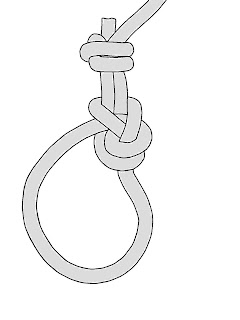The top bight is inserted into the loop. This forms a slip knot.
The remaining bight captures the loop formed by the slip knot.
Once captured, the slip knot is pulled out. Another way to say it is as follows: the slip knot is capsized (turned inside out).
Consider how a bowline was just formed by a slip knot. Could it capsize the other direction? Yes. Thus the bowline alone isn't stable for the demands of climbing. It needs to be backed up.
A common back-up is the Yosemite. Here it is.










